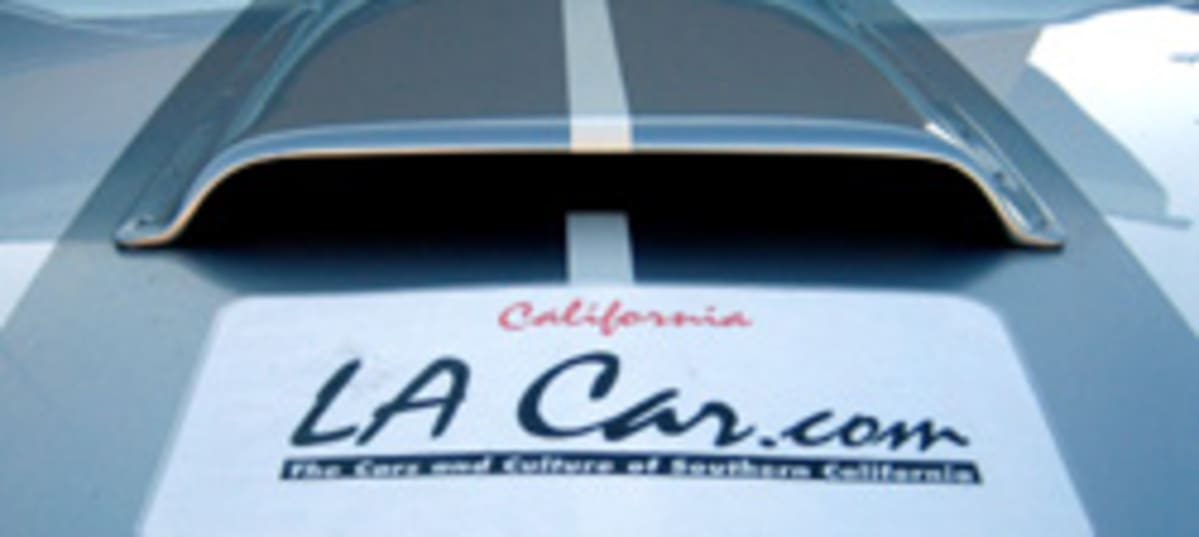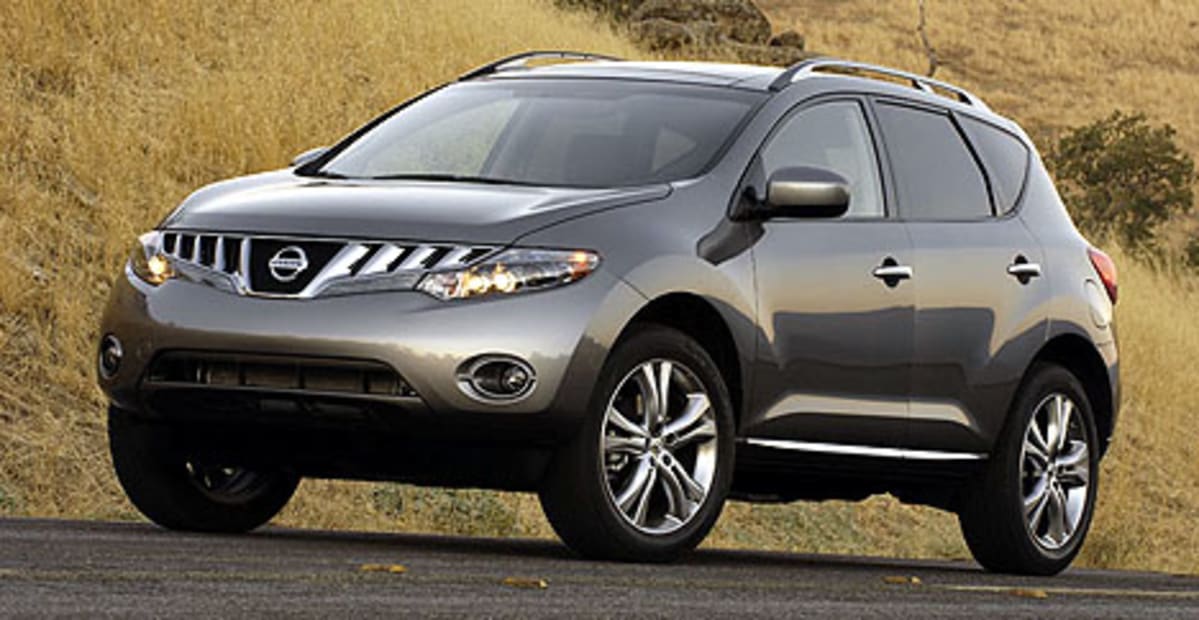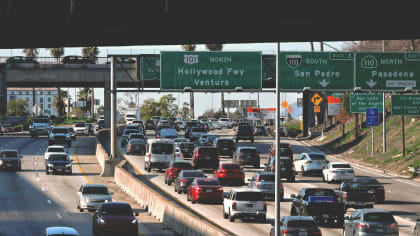BACK SEAT DRIVING - FEBRUARY 2008
This article is from our archives and has not been updated and integrated with our "new" site yet... Even so, it's still awesome - so keep reading!
Published on Fri, Feb 1, 2008
By: The LACar Editorial Staff

2009 Nissan Murano
NAKANO: BACK SEAT DRIVING LATEST RESULTS OF IIHS CRASH TESTS Murano Tops Field of Midsize SUVs, 3 SUVs are Marginal ARLINGTON, VA - The best overall performer in front, side, and rear tests of nine 4-door midsize SUV models is the redesigned 2009 Nissan Murano, which earns the Top Safety Pick award. The tests were recently conducted by the Insurance Institute for Highway Safety. The Jeep Liberty, Jeep Wrangler 4-door, and Kia Sorento, all 2008 models, are the worst performers in the side test. The Liberty, also sold as the Dodge Nitro, and Wrangler earn the second lowest rating of marginal for protection in side crashes. The Sorento earns the lowest rating of poor. The Mazda CX-7 and CX-9 as well as the Mitsubishi Endeavor earn good ratings for protection in front and side crashes. All three would have won Top Safety Pick if they had good ratings for protection against neck injury in rear-end crashes. The seat/head restraint combinations in both Mazdas are rated marginal for rear crash protection. The Endeavor's is poor. Safety of SUVs is improving: In 2001 only half of the midsize models that were tested earned good ratings in the frontal offset test. In the latest evaluations, all but the Hummer H3 do, and it earns an acceptable rating. As manufacturers introduce improved designs, more SUVs are qualifying for Top Safety Pick by earning good ratings in all three tests and having electronic stability control (ESC). For the 2007 model year, the Institute added ESC as a criterion. It's a control system comprised of sensors and a microcomputer that continuously monitors how well a vehicle responds to a driver's steering input and selectively applies brakes and modulates engine power to keep the vehicle traveling along the path indicated by the steering wheel position. Institute research indicates that ESC reduces the risk of fatal single-vehicle crashes by 56 percent and fatal multiple-vehicle crashes by 32 percent. Many single-vehicle crashes involve rolling over, and this feature reduces the risk of fatal single-vehicle rollovers by 80 percent (SUVs) and 77 percent (cars). "Combined with test results released last year, consumers now have 9 midsize, moderately priced SUV models that earn our Top Safety Pick designation," says Institute senior vice president Joe Nolan. "More good news is that manufacturers have been moving quickly to add safety features like stability control and side airbags to their SUV models," Nolan adds. "All of the SUVs in this group have ESC, and all but the Wrangler have standard side airbags. Increasingly, consumers are getting the latest safety equipment without having to hunt through a list of options." Murano wins Top Safety Pick designation: The Murano has been redesigned for the 2009 model year and ESC, previously an option, now is standard equipment. This is the only SUV in the group recently tested to earn good ratings in all 3 Institute tests, and it's 1 of only 2 in this group to earn a good rating for protection against whiplash injury in rear-end crashes. Whiplash usually isn't life-threatening, but it can be debilitating and difficult to recover from. Whiplash is the most serious injury reported in about 2 million insurance claims each year, which cost at least $8.5 billion. Rear impacts are common in everyday commuter traffic. In one urban county in Virginia, 63 percent of daytime crashes on urban interstate highways in 2003 were rear impacts. "You don't know what kind of crash you're going to get into, so you want a vehicle that affords the best protection in the most common kinds of crashes," Nolan says. "The Murano is the only SUV in the group that does this." Chest protection isn't up to par in some SUVs: Head protection is important in a side crash, but so is protecting the chest and abdomen. Manufacturers can do this with additional padding in the doors or with separate side airbags that usually deploy from the side of the seat. Unlike most cars that are equipped with side airbags, some of the SUVs in this group with standard curtain airbags lack separate ones to protect the torso. Curtain airbags in the H3, Liberty, and Sorento provided good head protection, but all 3 were downgraded because forces on the driver dummy's metal ribcage indicated that rib fractures and internal organ injuries would be possible in a real-world crash of this severity. "Performance of some of these models in the side test was surprising," Nolan points out. "SUVs should have an inherent advantage in such crashes because drivers and passengers ride higher up than in cars. People often think they're safer in an SUV, but many cars perform much better in our side test than some of the SUVs in this group." Note: The Jeep Wrangler was tested without its optional combination head and torso side airbags. The Institute's policy is that when airbags are optional, the vehicle is tested without the option. A manufacturer may request a second test with the option if the automaker reimburses the Institute for the cost of the vehicle. In the case of the Wrangler, Chrysler didn't request another test. "We assume that Chrysler doesn't expect the Wrangler to perform much better, even with the optional airbags," Nolan says. Hummer isn't good in frontal crash: Nearly every vehicle the Institute tests now earns the top rating of good for frontal crash protection. This wasn't the case for the Hummer H3, which earns an acceptable rating. The H3 is 1 of only 2 midsize SUV designs the Institute has recently tested that doesn't earn a good rating in the frontal test (the other is the Chevrolet TrailBlazer). In the Institute's test, high forces were recorded on the dummy's lower right leg, indicating the likelihood of injury. Still, forces on the dummy's head and chest were low, and the vehicle's structure held up well. "Acceptable isn't a bad rating," Nolan explains. "It's just not the best protection that's available. Considering the Hummer's acceptable side rating and poor rating in the rear test, we can see that this SUV hasn't been designed with the state-of-the-art crash protection of many of its competitors." How vehicles are evaluated: The Institute's frontal crashworthiness evaluations are based on results of 40 mph frontal offset crash tests. Each vehicle's overall evaluation is based on measurements of intrusion into the occupant compartment, injury measures recorded on a Hybrid III dummy in the driver seat, and analysis of slow-motion film to assess how well the restraint system controlled dummy movement during the test. Side evaluations are based on performance in a crash test in which the side of a vehicle is struck by a barrier moving at 31 mph. The barrier represents the front end of a pickup or SUV. Ratings reflect injury measures recorded on two instrumented SID-IIs dummies, assessment of head protection countermeasures, and the vehicle's structural performance during the impact. Injury measures obtained from the two dummies, one in the driver seat and the other in the back seat behind the driver, are used to determine the likelihood that a driver and/or passenger in a similar real-world crash would sustain serious injury to various parts of the body. The movements and contacts of the dummies' heads during the test also are evaluated. Structural performance is based on measurements indicating the amount of B-pillar intrusion into the occupant compartment. Rear crash protection is rated according to a two-step procedure. Starting points for the ratings are measurements of head restraint geometry - the height of a restraint and its horizontal distance behind the back of the head of an average-size man. Seats with good or acceptable restraint geometry are tested dynamically using a dummy that measures forces on the neck. This test simulates a collision in which a stationary vehicle is struck in the rear at 20 mph. Seats without good or acceptable geometry are rated poor overall because they can't be positioned to protect many people.
Your Back Seat Driving comments can be sent to: Letter to the Editor
NAKANO: BACK SEAT DRIVING ARE YOU CHANGING YOUR OIL TOO OFTEN? State Says Many Drivers Change Oil Too Often Remember the old adage about changing your car's oil every 3,000 miles? It was the gear head gospel, no matter what the manufacturer recommended. "It couldn't hurt," was the comeback. It turns out, it can hurt. The California Integrated Waste management Board has initiated a new state campaign urging California drivers to ignore both conventional wisdom and stick with the recommendations in the owner's manual of your vehicle. "Used oil is so much of a problem in California that if you can change your oil in less-frequent intervals, you not only save yourself money, you help save the environment," California Integrated Waste Management Board spokesman Jamie Cameron-Harley told Michael Cabanatuan of the San Francisco Chronicle. The Board is the sponsor of "The 3,000-Mile Myth" campaign and of the website, www.3000milemyth.org. The agency has the responsibility to reduce waste and keep used oil out of landfills, water bodies and groundwater. According to the Chronicle, the campaign was launched after research found that 73 percent of Californians change their oil more frequently than recommended by the manufacturers of their vehicles - most of them at 3,000 miles. Consumer Reports recently issued a statement corroborating the findings of the Board. "Although oil companies and quick-lube shops like to promote th, it's usually not necessary, said Consumers Union, publisher of Consumer Reports. "Go by the recommended oil-change schedule in your vehicle's owner's manual. Most vehicles driven under normal conditions can go 7,500 miles or more between oil changes. Some models now come with a monitoring system that alerts the driver when the oil needs changing. Depending on driving conditions, these can extend change intervals to 10,000 or 15,000 miles." "Very few people recommend changing the oil every 3,000 miles anymore, says Tom and Ray Magliozzi of NPR's Car Talk. "It's just not necessary, and the environmental cost is too high." "Oil can easily foul local ecosystems and even the drinking water supply," reports Cabanatuan. "People who change their own oil generate about 150 million gallons of used oil each year, according to the American Petroleum Institute." Cabanatuan offers some tips to protect the environment from your car's oil:
- Check your manual on how to properly change your oil and how frequently it should be done.
- Don't change your oil more often than necessary. Read the carmaker suggestions for your vehicle at www.3000milemyth.org.
- If you change your own oil, recycle both the oil and the filter. To find a recycling center, go to links.sfgate.com/ZCJP.
- Keep super-absorbent towels or kitty litter on hand to sop up any oil that is spilled.
- Keep your car properly maintained to prevent drips of oil or other fluids that could be washed into storm drains.
- Never dump anything - especially oil - in storm drains, which discharge directly to local waterways, the bay and the ocean.
Your Back Seat Driving comments can be sent to: Letter to the Editor
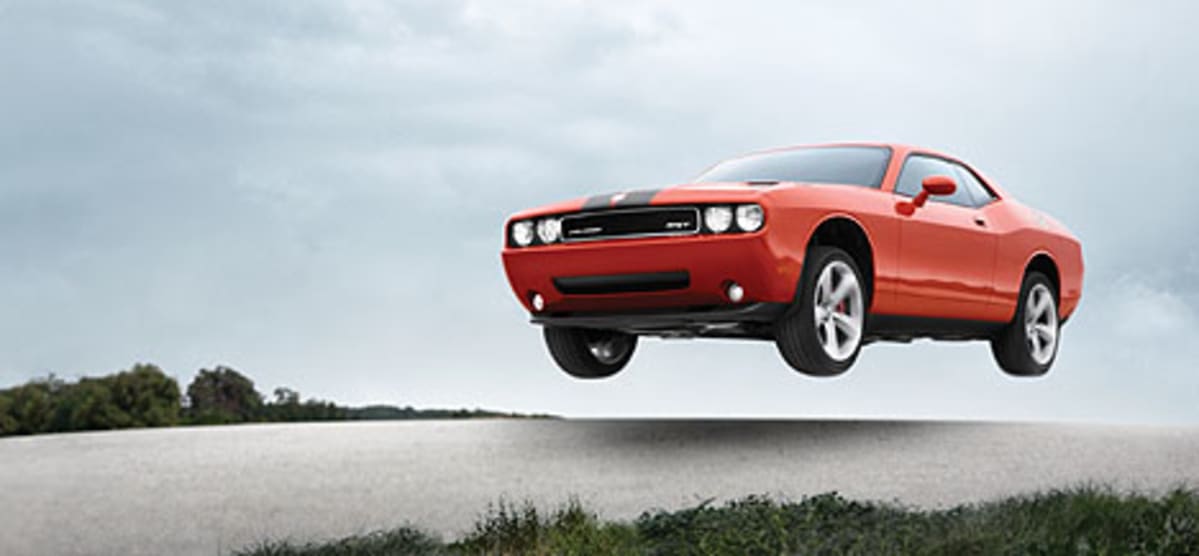
Dodge hopes the new Challenger will fly off the shelves
NAKANO:
BACK SEAT DRIVING
THROWDOWN!
Production Challenger SRT8 Introduced at the Chicago Auto Show
After years of concept cars, Dodge finally introduced the production version of
the new Challenger at the Chicago Auto Show. To make sure that we get the best
possible first impression, the company has chosen to start things off with the
top-of-the-line SRT8 version.
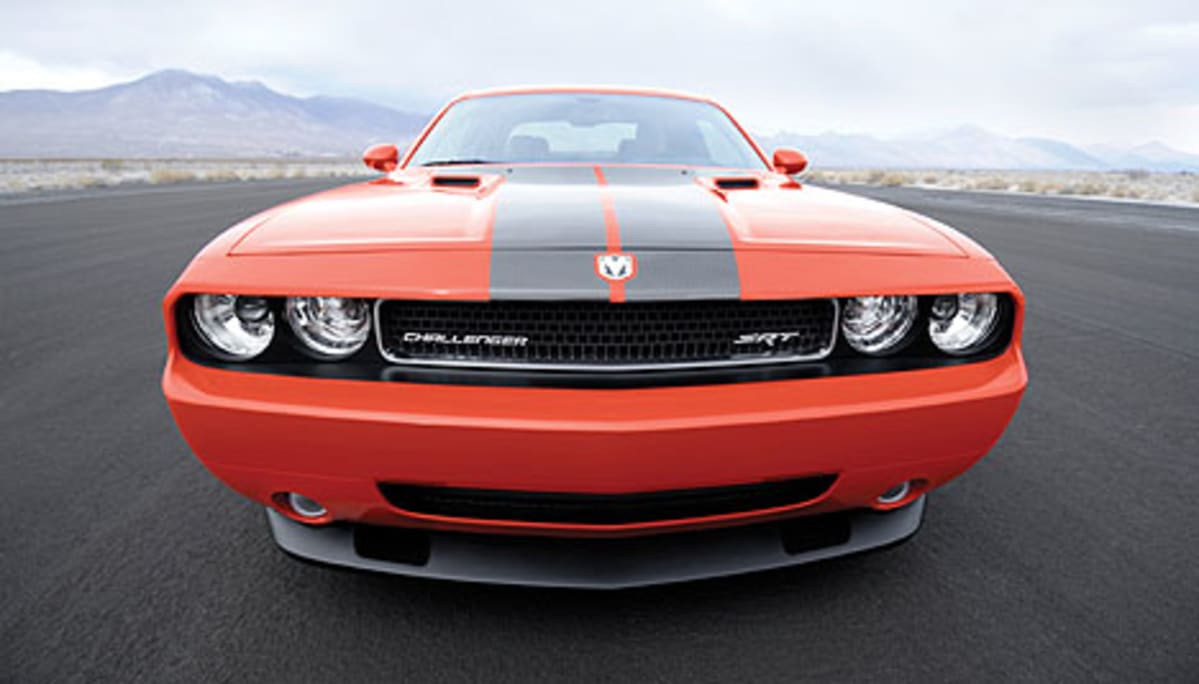
"The all-new Dodge Challenger SRT8 is engineered to give customers everything
they want in a modern muscle machine" said Mike Accavitti, Director - Dodge
Brand and SRT Global Marketing, Chrysler LLC. "The new version of Dodge's
American classic boasts tire-smoking performance and head-turning design while
offering a wide array of state-of-the-art technology, such as GPS navigation,
'Keyless Go' entry, a MyGIGâ„¢ infotainment system and UConnect hands-free
communication."
Developed by Chrysler's in-house performance engineering organization, the 2008
Dodge Challenger SRT8 was engineered with a focus on the five pillars of every
SRT vehicle: bold exterior design that resonates with the brand image, a
race-inspired interior, world-class ride and handling across a dynamic range, a
standout powertrain and benchmark braking.
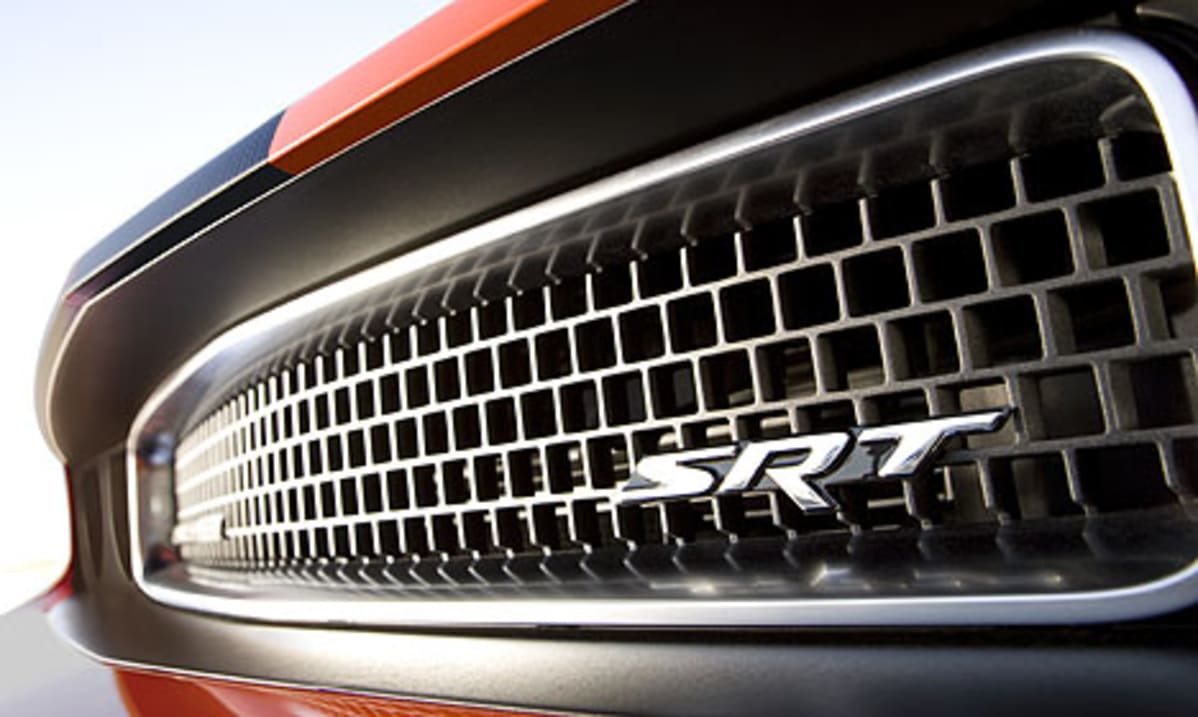
Dodge will offer the limited-edition 2008 Dodge Challenger SRT8 in three colors:
HEMI® Orange, Bright Silver Metallic and Brilliant Black Crystal Pearl Coat.
Each two-door, rear-wheel-drive coupe will be produced with a numbered dash
plaque, carbon fiberlike hood stripes and will be powered by SRT's 6.1-liter
HEMI V-8 engine that boasts 425 horsepower and 420 lb.-ft. of torque.
With a U.S. Manufacturer's Suggested Retail Price (MSRP) of $37,995 (including
$675 destination), the all-new 2008 Dodge Challenger SRT8 arrives in Dodge
showrooms this spring.
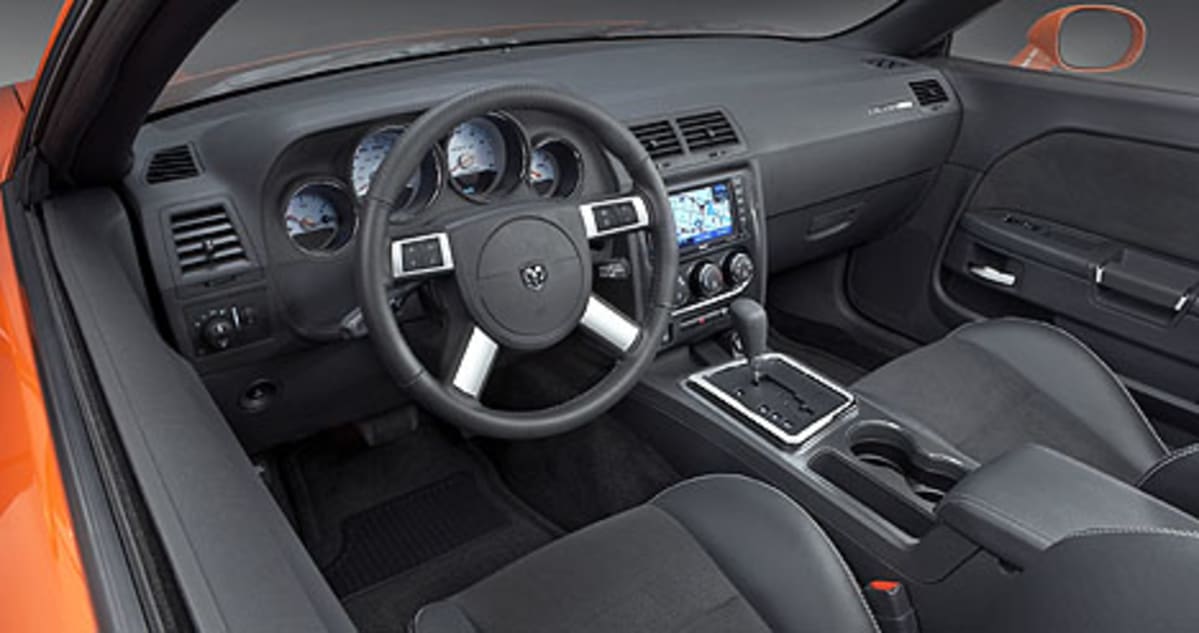
The 2008 Dodge Challenger SRT8 vehicles will be manufactured at Chrysler's
Brampton, Ontario, Canada assembly plant.
Performance targets for the all-new 2008 Dodge Challenger SRT8 include a 0-60
mph time in the low 5-second range, 0-100-0 mph in less than 17 seconds, a
¼-mile elapsed time of less than 14 seconds, 60-0 mph braking distance of
approximately 100 feet, and a skid pad performance of 0.88 g.
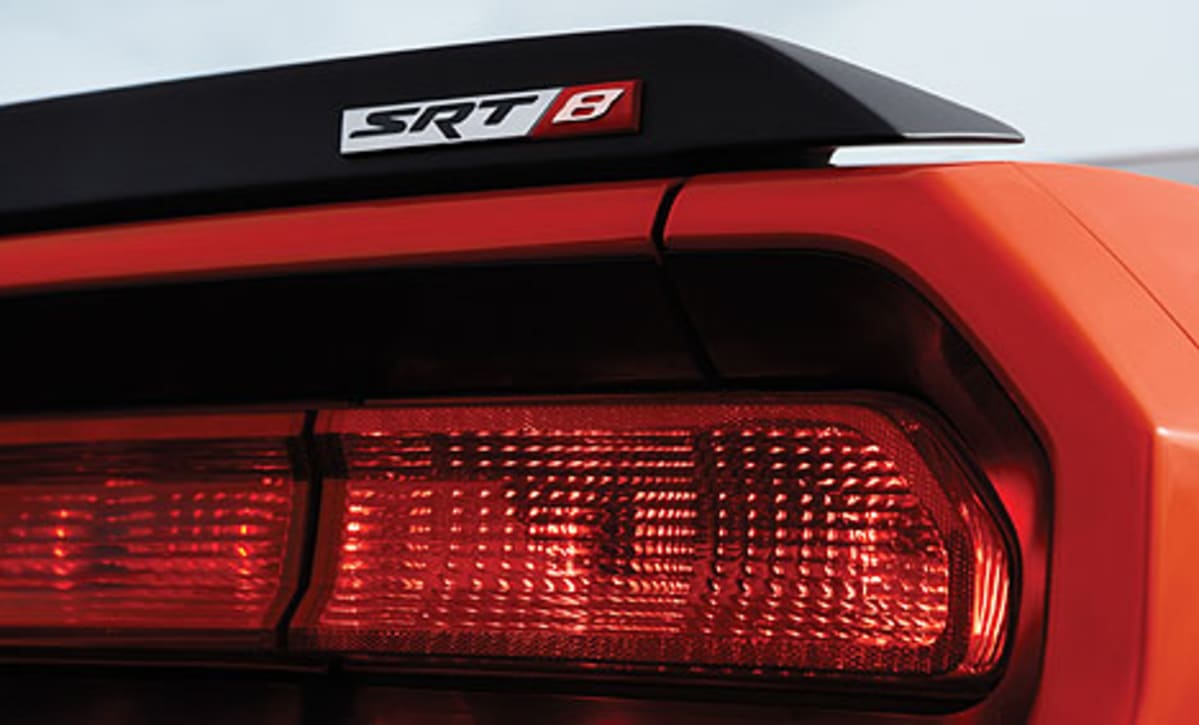
Your Back Seat Driving comments can be sent to: Letter to the Editor
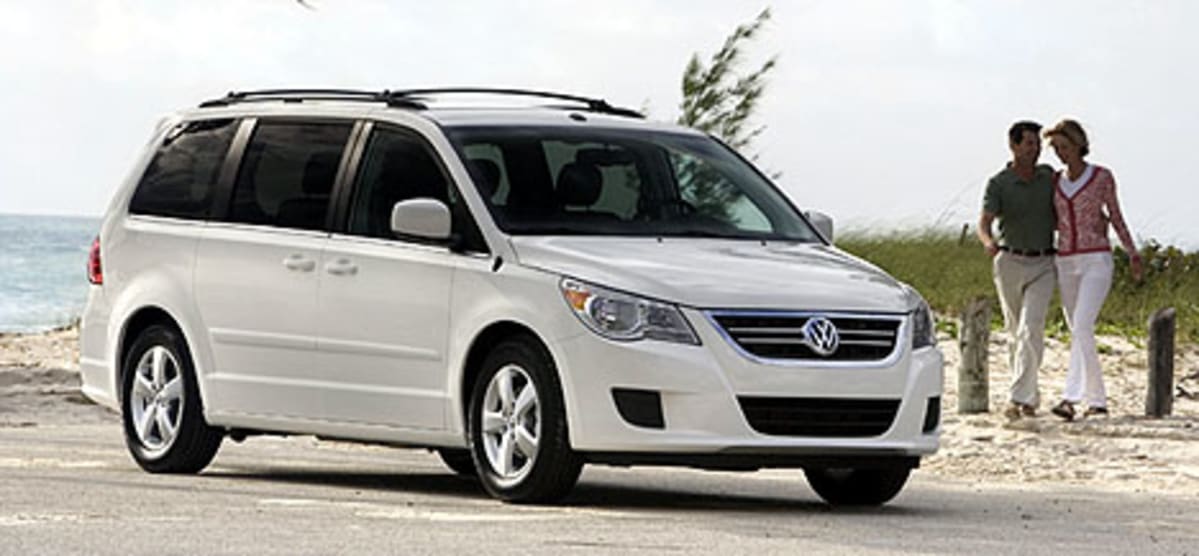
NAKANO:
BACK SEAT DRIVING
VW ROUTAN
Looking decidedly better than
Rodan, or the rattan VW
featured in the January 2008 Back Seat Driving column, Volkswagen of America
unveiled the Routan, a new seven-passenger minivan, at the Chicago Auto Show. The Routan is recognizable
as a member of the Volkswagen family, with its stylized front grille and
exterior treatments. The interior also follows the traditional Volkswagen design
philosophy that form follows function.
Second row captain's chairs offer an increased level of luxury and comfort while
still providing the convenience of a traditional minivan, with over 32.7 cubic
feet available behind the third row seats and a full 83 cubic feet is available
behind the second row.
The Routan will come standard with a 3.8L V6, offering 197 hp and 230 lb. ft. of
torque when combined with the standard six-speed automatic transmission. A 4.0L
V6 will be available rated at 251 hp and 259 lb. ft. of torque. Routan features
European tuned suspension and steering optimized for handling and improved
driving dynamics. Standard all-season traction control and ESP, brings safety
and security to the Routan. The Routan also comes with:
Conversation Mirror
Rear seat entertainment system with two nine-inch screens for second and third
row, wireless headsets, and remote control
Dual power sliding doors with power windows
Touch screen navigation with twenty meg hard drive
Power lift gate with flood lamp
Thirteen cup holders
Volkswagen will deliver the Routan with prices starting below $25,000. The
Routan will be built in the Chrysler facility in Windsor, Ontario.
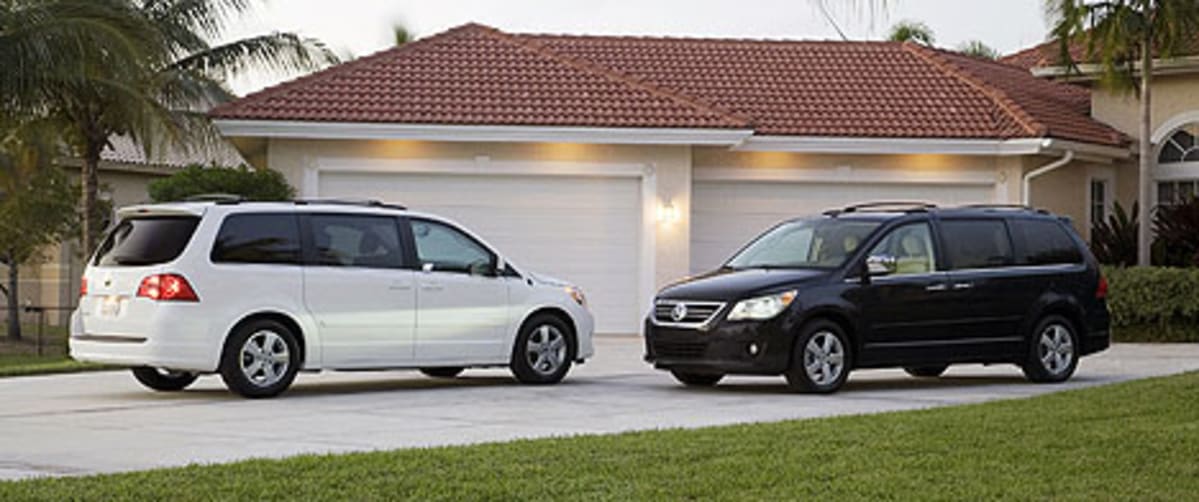
Your Back Seat Driving comments can be sent to: Letter to the Editor
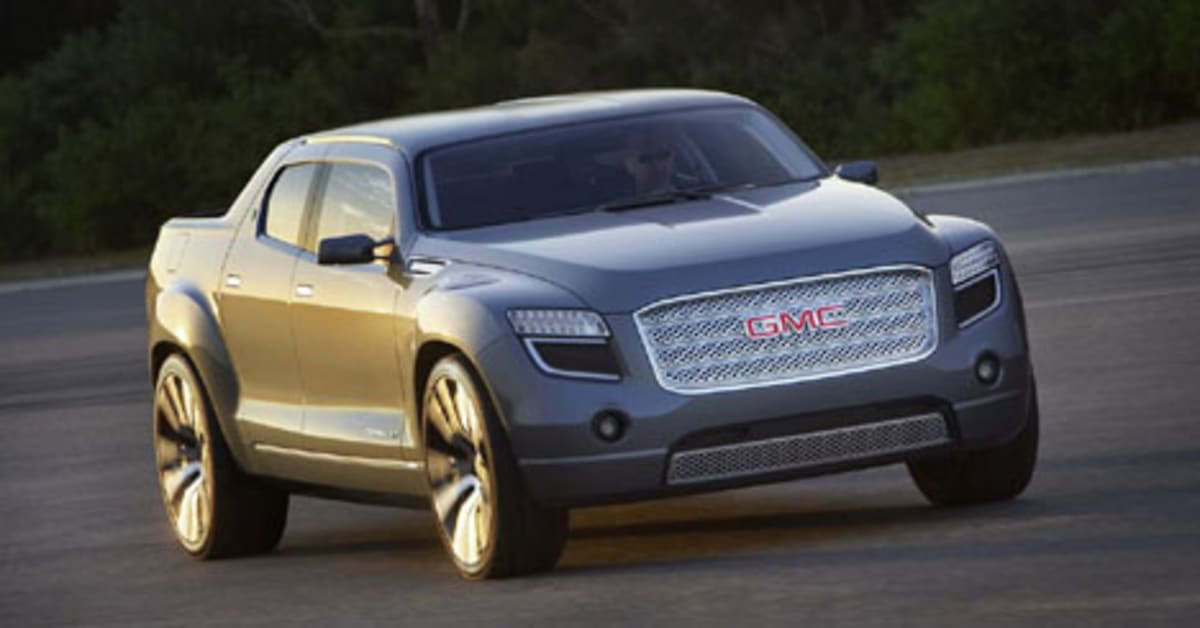
NAKANO:
BACK SEAT DRIVING
GMC Introduces the Denali XT Hybrid Concept Truck
GMC unveiled the Denali XT concept at the 2008 Chicago Auto Show. The company
claims a 50-percent increase in combined fuel economy over comparable small
pickup trucks when running on gasoline, while incorporating a new, muscular form
in a performance-styled, hybrid sport-utility truck (SUT).
The Denali XT has a unibody architecture and rear-wheel drive. It builds on the
equity of the Denali line and its reputation for advanced engineering and
refinement, including the first combination of GM's two-mode hybrid system with
an E85 ethanol-capable engine. Denali XT's new, more efficient 4.9L version of
GM's small-block V-8 features fuel-saving technologies such as direct-injection
technology and Active Fuel Management.
The engine is matched with GM's unique two-mode hybrid propulsion system, which
is said to give the SUT exceptional fuel economy and uncompromising capability -
including all-electric drive at low speeds. GMC hopes the public will fiind the
Denali XT perfectly suited to a variety of active lifestyle activities, such as
hauling skis and snowboards to the mountain or towing a sport jet boat to the
lake.
"Like all GMCs, the Denali XT is functional and capable, but it blends those
traits with a more efficient, sporty driving experience," said Jim Bunnell, GMC
general manager. "It is a vehicle that exemplifies GMC's engineering excellence,
as well as GM's commitment to hybrid and advanced technologies."
With its unibody structure, the Denali XT is lighter than conventional
body-on-frame trucks, with great ride-and-handling characteristics. This design
enhances fuel economy while giving the vehicle a sporty driving experience. True
to its GMC Professional Grade heritage, the Denali XT is filled with
technologies and features that maximize its flexibility, including a cargo
space-enhancing Midgate® and height-adjustable suspension.
The Denali XT's proportions are framed around a high cowl and 123.4-inch (3,134
mm) wheelbase. This enhances the vehicle's truck functionality, but packages it
in an efficient, unibody architecture.
Design and construction were spearheaded by Holden Design, within the Australian
arm of GM's global design and engineering network.
"Denali XT is about working hard, playing hard and enjoying an active
lifestyle," said Bunnell. "It is the same philosophy that has helped make the
GMC Acadia crossover a huge hit with consumers."
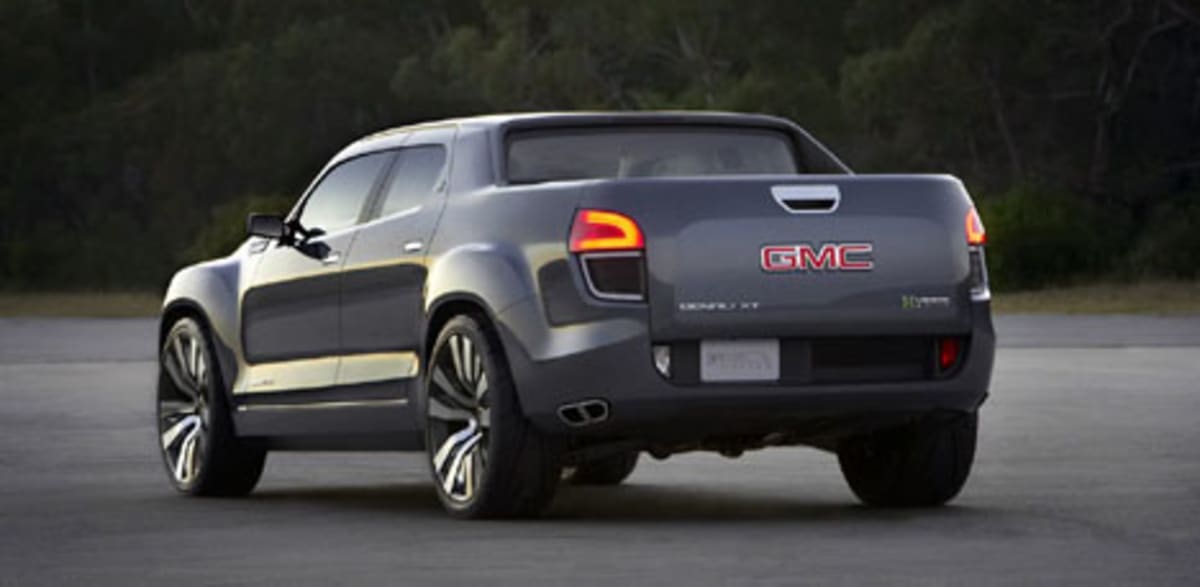
Return of the El Camino?
"It is a robust yet tailored design statement that is unlike anything else on
the road," said Ed Welburn, vice president, Global Design. "It has the youthful
look of a custom automobile that incorporates the capability customers expect
from a truck."
The Denali XT's design includes a new take on GMC's iconic grille, with a
prominent, four-bar element in addition to the large, red GMC logo and signature
Denali background. Flared fenders accentuate the wide road stance. The stance is
also enhanced when the Denali XT is lowered on its air-adjustable suspension,
which creates a sleeker appearance that simultaneously improves aerodynamics.
Large, bold 23-inch wheels and custom Kuhmo tires complement the Denali XT's
stance.
Inside, the Denali XT blends mechanical functionality with leather-trimmed
comfort. Billet-metal surrounds, controls and instruments convey the cold
precision of an aircraft cockpit. This is balanced by the warmth of bespoke
saddle-leather trimmed seats and other contact surfaces.
"The form language is smooth and structured to characterize GMC's power. The
details have a deliberately contrasting mechanical aesthetic to mark GMC's
engineering sophistication," said Warrack Leach, lead designer.
The interior features innovative instrumentation with "floating" red-illuminated
numerals backed by surface chaplets in the clusters and a large integrated
vehicle interface screen. The interior illumination was supplied by Osram.
The Denali XT seats four. The high-cowl vehicle architecture enables higher
seating positions, allowing the couple distance between front and rear occupants
to be reduced without compromising knee room. This packaging efficiency creates
generous interior and cargo bed dimensions within a more compact package.
Truck capability
With stiffness that is greater than most conventional, body-on-frame trucks, the
Denali XT's unibody structure supports a very capable truck platform. It also
serves as the mounting point for a four-wheel independent suspension that gives
the vehicle its performance feel on the road. The multilink front suspension
features a forward-mounted steering rack and dual lower links with ball joints
at the outer ends, providing sharp responses to driver input. At the rear, a
four-link suspension design uses coil-over shocks and a decoupled stabilizer bar
to enhance cornering control, reduce body roll and optimize longitudinal
compliance. In short, it's a truck that hauls more than cargo on twisting roads.
The rear cargo area is wide, deep and flat, with no suspension or wheelhouse
protrusions; the cargo floor measures 55 inches long (1,397 mm) by 47.5 inches
wide (1,206 mm). It all adds up to the space to haul a wide variety of lifestyle
accessories.
The Midgate can be lowered to extend the cargo-carrying capacity inside the
vehicle. The rear seats fold flat to provide a longer floor for carrying items
such as skis, surfboards or wood from the home improvement store. A fixed rear
window allowed engineers to retain the vehicle's structure, reducing mass and
complexity.
The Denali XT has an estimated payload capacity of 1,100 pounds (499 kg) and a
towing capacity of an estimated 3,500 pounds (1,587 kg). This capability is
delivered through unique vehicle and powertrain integration, where the multiple
modes of GM's two-mode hybrid system provide towing capability.
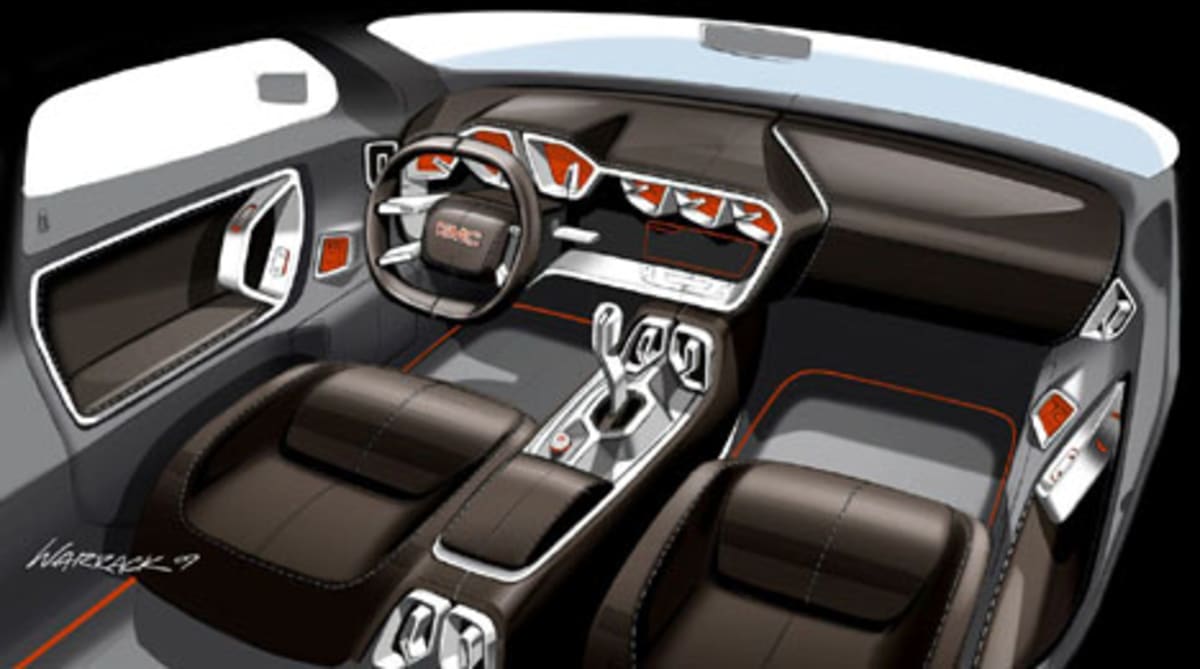
New 4.9L SIDI V-8 and two-mode hybrid system
For the first time, GM's rear-wheel-drive two-mode hybrid transmission is paired
with a smaller-displacement version of the small-block engine. The new V-8 4.9L
E85-capable engine powers the Denali XT with an estimated 326 horsepower (243
kW). It uses direct-injection technology to produce the power of a larger
engine, but consumes less fuel and produces lower emissions.
Also, the functionality of GM's Active Fuel Management system has been expanded
through the use of hybrid technologies, enhancing the cylinder-deactivating
feature to further improve fuel efficiency.
The Denali XT's two-mode hybrid system is partnered with the 4.9L engine and
uses an electrically variable transmission to enhance fuel efficiency in city
and highway driving. In city driving, all-electric propulsion is used at low
speeds; on the highway, fixed-gear operation enables efficient performance even
when towing a trailer.
The specific characteristics of the Denali XT allowed the synergistic evolution
of GM's small-block V-8 and two-mode hybrid beyond the recently introduced in GM
two-mode hybrid products, such as the GMC Yukon Hybrid and Sierra Hybrid. During
this optimization process, additional powertrain technologies have been
integrated, including Active Thermal Management, which transfers thermal energy
from one driveline component to another to improve efficiency; and a
high-efficiency axle configuration, which fundamentally reduces the losses
normally associated with conventional axle configurations.
The integration of the advanced internal combustion engine technologies and
two-mode hybrid system on the Denali XT reinforces GMC's Professional Grade
position as a brand that continues to exceed customer expectations.
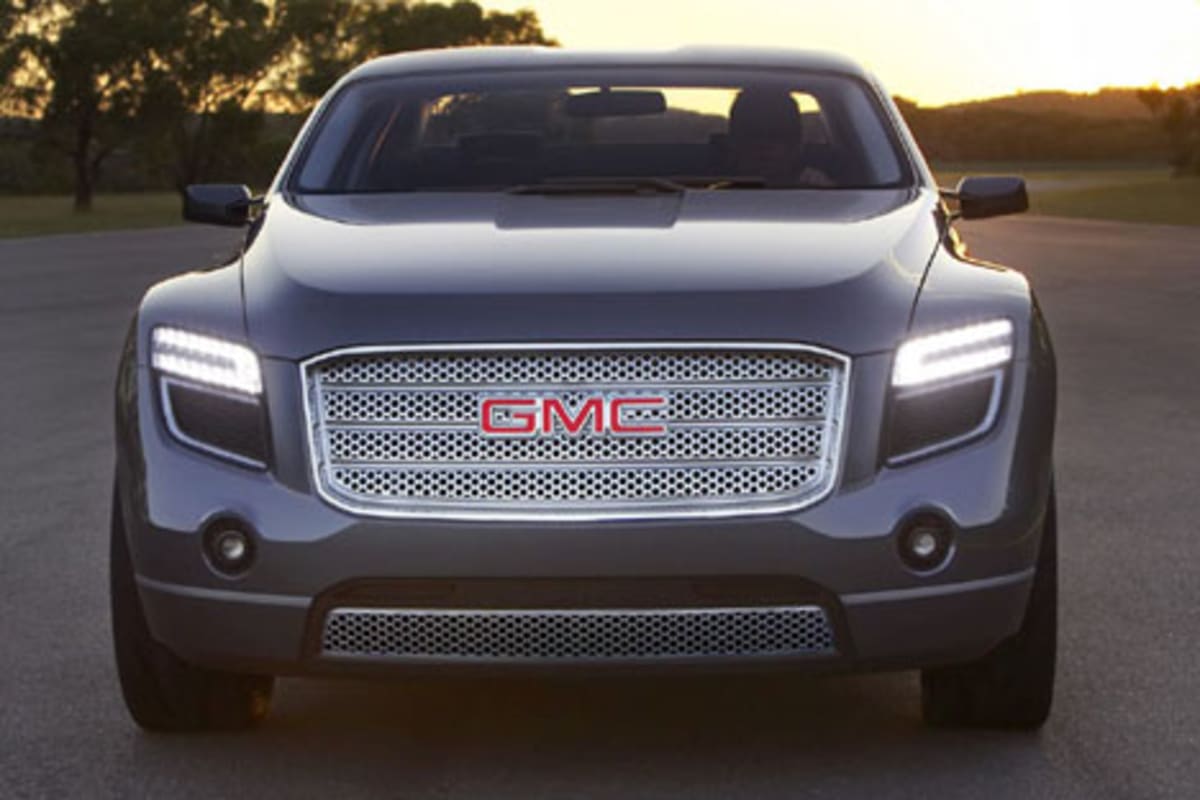
GMC DENALI XT CONCEPT SPECIFICATIONS Body style / driveline: four-door, four-seat; rear-wheel drive sport-utility truck Construction: body-frame integral Engine type: 4.9L SIDI V-8 with Active Fuel Management Horsepower (hp / kW): 326 / 243 (est) Fuel type: unleaded regular or E85 ethanol Transmission: two-mode hybrid Suspension: front: independent SLA; rear: independent SLA Brakes four-wheel disc Wheel size & type: 23-inch aluminum; split 5-spoke Tires: front: Kuhmo 255/35/R23 rear: Kuhmo 285/35/R23 Wheelbase (in / mm): 125.4 / 3134 Overall length: 205 / 5207 Overall width (in / mm): 76.3 / 1938 Overall height (in / mm): 62.5 / 1587 Track (in / mm): 65 / 1651 Cargo floor length (in / mm): 55 / 1397 Cargo floor width (in / mm): 47.5 / 1206 Payload (lb / kg): 1100 / 499 (est) Towing capacity (lb / kg): 3500 / 1587 (est) Your Back Seat Driving comments can be sent to: Letter to the Editor
A
JOURNAL OF LOS ANGELES & ITS CAR CULTURE That
was LA Car's subtitle when it started back in 1997. It's original website
address was about five times the size of lacar.com. Since then, La Car
became LA Car. Its subtitle became
Reporting From Car Culture Ground Zero, then From The Heart of Car
Culture, to today's The Cars and Culture of Southern California. At
all times, however, we aimed to chronicle the Southland's automotive spirit - much like
one's own
journal or diary.
LA Car has always been a great source
to come back to from week-to-week, to see what articles and reviews have been
added to our rather staggering database. With Back Seat Driving, a.k.a.
BSD (note the similarity to two well-worn abbreviations, BS and BFD) and Live
Wires - Hot & Tender News From the Car Culture (co-located with Back Seat
Driving, and updated at least daily), we give you some reasons to
come back more often (all opinions, by the way, are those of the respective
author).
So, go
ahead and bookmark www.lacar.com. We'll be
sure to always provide a link to Live Wires and the latest Back Seat
Driving blog entry. In the meantime, welcome to the journal and journey from
the heart of the car culture. - Roy Nakano For
past Blog entries, click the following:
January 2008
December 2007
November 2007
October 2007
September 2007
August 2007
July 2007
June 2007
May 2007
April 2007
March 2007
February 2007
January 2007
December 2006
November 2006
October 2006
September 2006
August 2006
July 2006
June 2006
May 2006
April 2006
March 2006
February 2006
January 2006
December 2005
November 2005
October 2005
September 2005
August 2005
July 2005
June 2005
May 2005
April 2005
March 2005
February 2005
January 2005
December 2004
November 2004
October 2004
September 2004
August 2004
July 2004
June 2004
May 2004
April 2004
